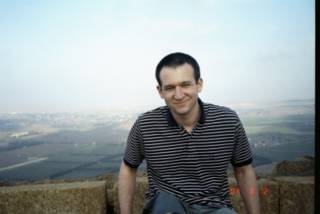Malkovitch plays Copland
On Sunday, I attended the junior recital of an old friend of mine, Ben Malkovitch. Ben's a pianist and cellist, and like everyone else who is not lucky enough to four arms, he does not play both instruments at the same time. This time, he used his two arms to play the piano.The recital was given at Hofstra University's Monroe Hall. It was a multimedia effort; Ben gave a presentation on the music he was to perform, which consisted of an interesting little Toccata by Marion Bauer, J.S. Bach's Italian Concerto, Chopin's D-flat Nocturne, Mahler's Songs of a Wayfarer (sung wonderfully by another Hofstra student), and Aaron Copland's Piano Sonata, written between 1939 and 1941. The time in between the lecture and the concert was filled by a recording of Mahler's First Symphony, a theme of which arises in the Songs.
The Copland was new to me, and, I bet, new to just about everyone else in the audience. The Sonata has a experimental feel to it, but it is not weighed down by the hyper-intellectualism that pervades many atonal works. Copland was a composer who never allowed the rigor of a form to get in the way of the music. The second movement, a Vivace, is jazz-influenced, though the short motifs that form the foundation of movement tend to obscure the jazz feeling. Twentieth century composers seems to have had a tough time infusing jazz into forms that were not jazz-like; Samuel Barber tried to do the blues in the second movement of his Excursions, and, like a number of other attempts, it came out sounding pretty labored because Samuel Barber, great as he was, was not a jazz musician. Perhaps notating that which is usually improvised is a futile exercise (though Morton Gould pulled it off nicely with his Boogie-Woogie Etude.) Copland is not making such a direct attempt at writing jazz, so perhaps it takes a second listening to pick up.


0 Comments:
Post a Comment
<< Home